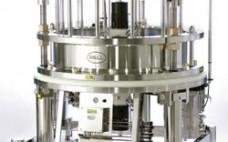Biomanufacturers must take active measures to minimize their environmental footprints and promote environmental sustainability. The collateral benefit of reducing environmental footprint often is viewed as only a secondary consideration after cost of goods and product quality. Biopharmaceutical processes are 80% defined by the time of proof-of-concept studies (clinical trial stage 2b). This milestone is before the official technical transfer to commercialization or manufacturing organizations and almost always before the environmental evaluation of a production process. This step is…
Downstream Processing
pDNA Production and Purification
In recent years, there has been a growing demand for DNA-based therapeutics, commonly known as gene therapy, to combat genetically-based pathologies. Because plasmid DNA have significantly different biophysical characteristics than proteins, their production can have a drastic impact on downstream purification unit operations. Join Dr. Stephen Palmieri and Dr. Jesse McCool of Lonza Biologics and Dr. Fred Blattner of Scarab Genomics as they take a detailed look at the challenges faced by pDNA manufacturers and how Lonza’s pDNA Production Platform addresses those challenges.
Single-Use Technology
Single-use technology began on the downstream side of bioprocessing, primarily in presterilized filter capsules and plastic biocontainers for buffers and media. Since then, it has expanded to upstream operations, including disposable bioreactors and mixers. The newest trend is to move further downstream into sterile formulation and filling. With the increasing popularity of disposable systems, some users are wondering what is being done to standardize the various components from different manufacturers and what BPSA (the Bio-Process Systems Alliance) is doing to…
How Pore and Fibrous Interstice Structure Influence Filter Performance
When bioprocess liquids bearing suspended particles are filtered, retained particles can block and clog membrane filter pores. The pore size rating of a filter should be selected to retain objectionable particles by sieving, and the aptitude of its polymeric composition for adsorptive sequestration of those particulates also needs to be known. The quantity and nature of retained particles require accommodation if filtrative removal is to be considered successful. Too extensive a particle load will prematurely block a filter’s…
Improving IEX Throughput and Performance with Differentiated Chromatography Sorbents
Optimized upstream processing and high-productivity cell culture increase not only target protein titers, but also impurity and contaminant concentrations to be removed from large volumes of feedstock. Simultaneously, biopharmaceutical drug production is increasingly driven by manufacturing cost reduction. These facts together increase the pressure on downstream processing and create an urgent need for more productive and streamlined chromatography operations. Key parameters to consider for enhanced process economics in chromatography are higher protein binding capacities at high flow rates…
Improving IEX Throughput and Performance with Differentiated Chromatography Sorbents
As upstream processing becomes more optimized, it increases the amount of impurity and contaminants to be removed from large volumes of feedstock. With this added pressure on downstream processing, there is a pressing need for more efficient chromatography operations.
In this paper, the authors describe how they characterized differentiated selectivity of Q and S HyperCel ion-exchange sorbents. They evaluated the dynamic binding capacity in various pH, conductivity, and residence time conditions; carried out a separation of a model mixture to further characterize the sorbents’ specific selectivity; and report on a real case application in which one was used in a capture step for purification of a recombinant protein from an E. coli lysate.
Single-Use Connections Enable Advancements in Aseptic Processing
Today’s market demand for new drugs — combined with the difficult economic environment — is challenging bioprocessors to review their manufacturing systems and seek ways to make them more flexible, reliable, and cost effective. Increasingly, biomanufacturers are turning to single-use aseptic processing systems to meet or beat aggressive product-introduction timeframes while controlling costs. Innovative new single-use technologies continue to be introduced, giving pharmaceutical companies greater flexibility for replacing traditional stainless tubing, equipment, and even entire process suites with…
How Pore and Fibrous Interstice Structure Influence Filter Performance
A common objective in pharmaceutical processing is the removal of solids from fluid suspensions through filtration. The usual purpose is the removal of the solid particles to a specified extent, within a given time interval, at the largest possible throughput. Attainment of those goals is managed by proper selection of filtration conditions: principally an adequate effective filtration area (EFA) as defined by filter porosity and a proper rate of flow as regulated by applied differential pressure (ΔP) over…
Minibodies and Multimodal Chromatography Methods
Small, genetically engineered immunological constructs are being developed industry-wide for a growing range of in vivo applications. Examples include Fab, F(ab’)2, single-chain (sc) Fv, bis-scFV, diabodies, minibodies, and single-domain antibodies (1). Their small size potentially gives them access to tissues that are poorly accessible by intact antibodies; rapid clearance from blood and nontargeted tissues; lower immunogenic response; and eye-drop, inhalant, or oral administration. We report here on purification of an affinity-matured, humanized, antiprostate stem-cell antigen (PSCA) minibody for…
Using In-Line Disposable Pressure Sensors to Evaluate Depth Filter Performance
Development of a recovery process for a fed-batch mammalian cell culture product involves several objectives: process scalability, robustness, maximizing product yield, elimination of subsequent purification steps, and low cost of goods. In an effort to achieve those objectives, we developed a three-stage primary recovery process to remove biomass and clarify the feed stream for downstream column chromatography (Figure 1). The initial stage involves removal of whole cells and larger cellular debris using a continuous disc-stack centrifuge. Depth filtration…


